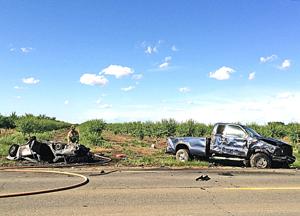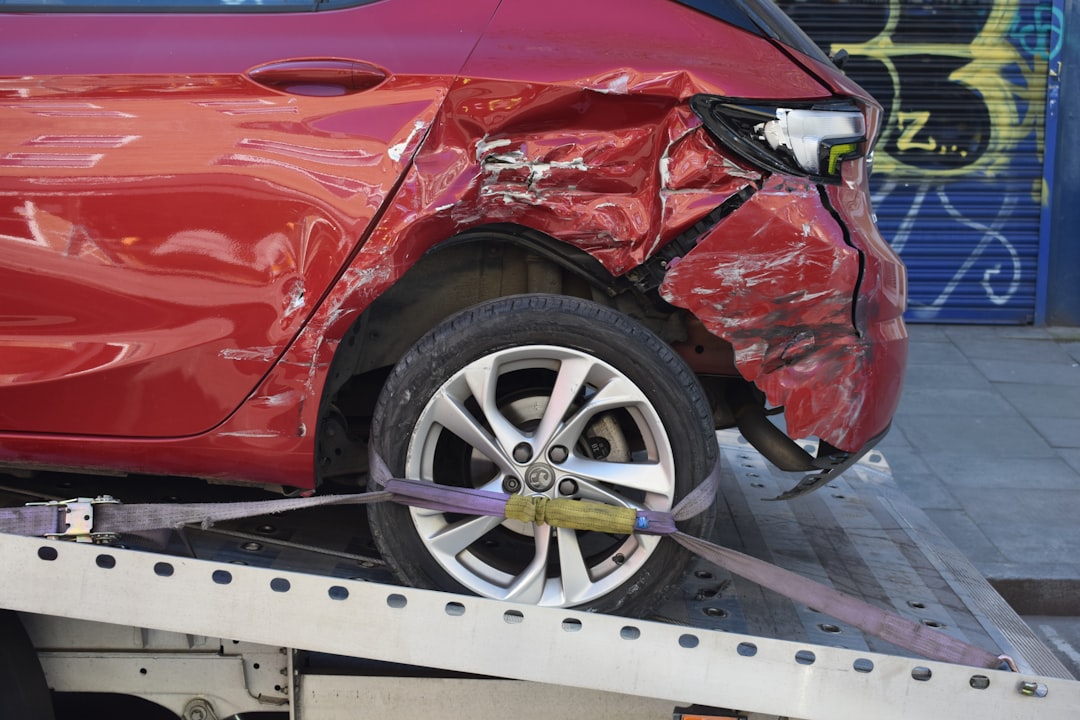Understanding the Basics of No-Fault Claims
Understanding the Basics of No-Fault Claims
No-fault insurance, a term often heard but not always fully understood, represents a significant departure from traditional fault-based insurance systems. At its core, no-fault insurance is designed to streamline and simplify the claims process following an automobile accident, aiming to reduce legal battles and ensure swifter compensation for those involved.
In a traditional fault-based system, determining who was at fault for an accident is crucial. This determination affects whose insurance will cover the damages and medical expenses. The process can be lengthy and contentious, often involving investigations, witness testimonies, and sometimes even court proceedings. For the injured parties needing immediate medical care or vehicle repairs, this delay can be particularly burdensome.
No-fault insurance changes this dynamic by allowing policyholders to receive compensation from their own insurance company regardless of who caused the accident. This means that after an accident occurs, each driver involved will file a claim with their respective insurers to cover medical expenses and other out-of-pocket losses related to the injury. This approach significantly reduces the waiting time for victims to receive necessary funds for recovery.
The benefits of no-fault insurance are manifold. First and foremost, it promotes quicker settlement of claims. Since there's no need to establish fault before disbursing payments for medical costs and lost wages, injured parties can get back on their feet more rapidly. Furthermore, by minimizing the need for litigation over minor accidents, no-fault systems help decongest courts and reduce legal fees for both insurers and insured individuals.
However, no system is without its drawbacks. One criticism of no-fault insurance is that it may lead to higher premiums. Because insurers are required to pay out claims regardless of fault - potentially even when their policyholder was clearly not responsible - they may increase premium rates across the board to cover these expenses. Additionally, some argue that without the deterrent effect of being found at fault in court or through an insurer's investigation, drivers might become less careful on the road.
Another point of contention lies in coverage limits imposed by no-fault policies. While they typically cover immediate economic losses such as medical bills and lost wages up to a certain threshold, they might not compensate entirely for pain and suffering or long-term rehabilitation needs unless specific conditions are met or additional coverage options are purchased.
Despite these concerns, many states in the U.S., as well as various countries around the world have adopted some form of no-fault insurance due to its ability to enhance efficiency in handling auto accident claims.
In summary, understanding no-fault claims involves recognizing both its pragmatic benefits in expediting financial relief post-accident and considering potential downsides like increased premiums or limited scope of coverage compared with traditional liability-based systems. As with any type of insurance policy decision-making process should involve careful consideration based on individual circumstances including driving habits risk tolerance levels budgetary constraints among others factors ensuring optimal protection tailored specific needs while maintaining peace mind amidst uncertainties life throws way especially behind wheel
Eligibility Criteria for Filing a No-Fault Claim
Eligibility Criteria for Filing a No-Fault Claim
No-fault insurance, also known as Personal Injury Protection (PIP), is designed to simplify the process of claiming insurance benefits after an automobile accident, regardless of who was at fault. This system aims to reduce the need for litigation and ensures that victims receive compensation quickly. However, not everyone automatically qualifies to file a no-fault claim; there are specific eligibility criteria that must be met.
First and foremost, the policyholder must have no-fault insurance coverage included in their auto insurance policy. While some states mandate this type of coverage, others do not, making it crucial for drivers to verify their policy details. Without PIP coverage, the concept of filing a no-fault claim becomes moot.
Another critical factor is the location where the accident occurred. No-fault laws vary significantly between states, with some adhering strictly to no-fault principles while others follow a more traditional fault-based system. In pure no-fault states like Florida or Michigan, policyholders can directly file claims with their own insurer irrespective of fault. Conversely, in hybrid states like New York or Pennsylvania, there may be thresholds related to injury severity or economic losses that determine whether one can step outside the no-fault system and pursue additional compensation through litigation.
The nature and extent of injuries sustained also play an integral role in determining eligibility. Generally, no-fault insurance covers medical expenses, lost wages, and rehabilitation costs without considering who caused the accident. However, if injuries are severe-often defined by statutory thresholds such as significant disfigurement or permanent disability-the injured party might be eligible to seek further compensation from the at-fault driver's insurance.
Furthermore, timely reporting of the incident is essential for maintaining eligibility. Most policies stipulate that accidents must be reported within a specified period-usually 24 hours to 30 days-to qualify for no-fault benefits. Failing to adhere to these timelines can result in denial of claims.
Documentation also plays a pivotal role in establishing eligibility. The claimant needs to provide comprehensive evidence supporting their case: police reports detailing the accident scene, medical records substantiating injuries sustained and treatment received, wage statements illustrating lost income due to inability to work-all these documents collectively build a robust claim file.
Lastly, it is worth noting that certain exclusions might apply based on individual circumstances or policy specifics. For instance, if an accident occurs while committing a crime or driving under influence (DUI), no-fault benefits could be denied despite meeting other criteria.
In conclusion, while no-fault insurance aims at streamlining compensation post-accident by eliminating lengthy legal battles over fault determination; understanding its eligibility criteria is paramount for successful claims filing. Ensuring appropriate coverage exists within one's auto policy aligning with state-specific regulations stands as foundational knowledge every driver should possess alongside prompt reporting practices coupled with thorough documentation preparedness-all working synergistically towards securing rightful entitlements under this unique system aimed primarily at fostering quicker recovery pathways post-accidents sans protracted disputes over liability assignments.
Steps to File a No-Fault Insurance Claim
Filing a no-fault insurance claim can seem like a daunting process, especially when you're already dealing with the aftermath of an accident. No-fault insurance, also known as personal injury protection (PIP), is designed to cover your medical expenses and lost wages regardless of who was at fault in the accident. While this system aims to simplify the claims process and reduce litigation, it still requires you to follow certain steps to ensure your claim is processed efficiently.
The first step in filing a no-fault insurance claim is to notify your insurance company as soon as possible after the accident. Most insurers have specific time frames within which you must report an incident; failing to do so may jeopardize your claim. When you call, be prepared to provide basic information about the accident, including the date, time, location, and any details about injuries sustained or damage incurred.
After notifying your insurer, you'll need to fill out a PIP application form. This form typically requires detailed information about the accident and any medical treatments you've received since then. It's crucial to be thorough and honest when completing this form because any discrepancies could delay the processing of your claim or even result in denial.
Next, gather all relevant documentation related to your medical treatment and lost wages. This includes hospital bills, receipts for medications, doctor's notes, and records of any physical therapy sessions or other treatments you've undergone. If you're claiming lost wages, you'll also need proof of employment and income prior to the accident. Having all these documents organized will help streamline the claims process.
Once you've submitted your PIP application and supporting documents, your insurer will begin reviewing your case. During this period, it's essential to keep detailed records of all communications with your insurance company. Note down dates of phone calls or emails exchanged and summarize what was discussed during each interaction. This practice can be invaluable if there are any disputes or delays in processing your claim.
In some cases, your insurer may require you to undergo an independent medical examination (IME) by a doctor they select. The purpose of this exam is to verify the extent of your injuries and ensure that they are consistent with what's stated in your claim. While this may feel intrusive or inconvenient, complying with such requests is generally mandatory under most no-fault policies.
If everything goes smoothly, you should receive compensation for covered expenses without too much hassle. However, if there are issues-such as denied claims or insufficient payouts-you have options for recourse. You can request a review from higher authorities within the insurance company or seek external mediation through state regulatory bodies that oversee insurance practices.
Filing a no-fault insurance claim might not eliminate all stress associated with an accident but understanding each step can make navigating this complex landscape more manageable. By acting swiftly after an incident occurs, meticulously documenting all relevant information and maintaining clear communication with your insurer throughout the process-you can significantly improve the likelihood of a favorable outcome for your claim.
Common Challenges and How to Overcome Them
No-fault insurance claims are designed to simplify the process of obtaining compensation for injuries or damages sustained in an automobile accident, without needing to establish who was at fault. However, navigating through this system can still present a set of common challenges that policyholders must overcome. Understanding these hurdles and knowing how to address them can make the claims process more manageable and less stressful.
One of the primary challenges faced by individuals is understanding the nuances of their no-fault insurance policy. Insurance policies are often filled with legal jargon and complex terms that can be difficult to comprehend. Misunderstanding coverage limits, exclusions, or procedural requirements can lead to denied claims or inadequate compensation. To overcome this challenge, it is crucial for policyholders to thoroughly review their insurance documents. Consulting with an insurance agent or legal advisor can provide additional clarity and help ensure that all aspects of the coverage are fully understood before an incident occurs.
Another frequent issue involves timely reporting and documentation. No-fault insurance systems typically have strict deadlines for filing claims and submitting necessary documentation such as medical reports, police reports, and repair estimates. Missing these deadlines can jeopardize one's ability to receive compensation. Policyholders should act promptly after an accident by contacting their insurer as soon as possible and keeping meticulous records of all related expenses and communications.
Medical treatment verification also poses a considerable challenge in no-fault claims. Insurers may require proof that medical treatments received were necessary and directly related to the accident in question. This can result in disputes over medical bills or delays in receiving payments for treatments already rendered. To mitigate this risk, it is advisable for claimants to obtain detailed medical reports from healthcare providers that specifically link injuries to the accident event. Additionally, maintaining open communication with both medical professionals and insurers helps streamline this aspect of the claim.
Fraud detection mechanisms within no-fault insurance systems can sometimes inadvertently complicate legitimate claims. Insurers scrutinize claims closely for signs of fraud due to past instances where exaggerated or fabricated injuries were reported. While this scrutiny is essential for preventing abuse, it can cause delays or increased demands for proof from genuine claimants. Staying organized with comprehensive documentation-such as photos from the accident scene, witness statements, and chronological records-can help substantiate a claim's validity.
Lastly, dealing with uncooperative parties presents another hurdle in no-fault insurance claims even though fault isn't supposed to be a factor in compensation decisions within this system; there might still be situations where other involved parties (like passengers) disagree on facts surrounding the incident which could complicate proceedings further especially if they too need reimbursement under similar policies but have conflicting accounts about what transpired during said event(s). In such scenarios having clear evidence along thorough personal notes taken immediately post-incident will prove invaluable not only resolving potential disputes efficiently but also ensuring fair treatment throughout entire process itself regardless any external disagreements possibly arising thereinfrom others' differing perspectives regarding same occurrence(s).
In conclusion while navigating complexities inherent within framework governing no-fault automobile insurance certainly does entail overcoming variety obstacles ranging everything simply comprehending intricacies own individual policy through handling various administrative requirements associated filing successful claim ultimately achieving satisfactory resolution remains entirely feasible provided diligent proactive approach adopted each step way thus enabling smoother less stressful experience overall despite inherent difficulties encountered along journey towards eventual equitable settlement rightful entitlements deservedly owed accordingly secured promptly effectively end day ultimately benefiting everyone involved alike thereby fostering greater sense security peace mind amidst uncertainty life's unpredictabilities inevitably unfold time again unforeseeable future ahead us all together collectively shared endeavor moving forward positively onward upward evermore beyond
Benefits and Drawbacks of No-Fault Insurance
No-fault insurance, a system implemented to streamline the claims process and reduce litigation costs, has both its staunch advocates and detractors. Understanding the benefits and drawbacks of no-fault insurance is crucial for policymakers, insurers, and consumers alike.
One of the principal benefits of no-fault insurance is the expedited payment of claims. Under this system, policyholders receive compensation from their own insurance company regardless of who is at fault for an accident. This eliminates lengthy investigations into fault, allowing for quicker access to funds needed for medical bills, lost wages, and other expenses. For individuals dealing with injuries or damages after an accident, this swift financial support can be invaluable.
Another advantage is the reduction in legal expenses. Traditional tort-based systems often lead to protracted legal battles as parties attempt to establish fault and secure compensation. No-fault insurance reduces the need for such litigation by providing coverage without regard to fault, thereby lowering legal fees and court costs. This can also help alleviate congestion in the judicial system.
Moreover, no-fault insurance can lead to more predictable premium costs. Since insurers do not have to factor in potential litigation expenses and lengthy claim disputes, they can more accurately predict their financial exposure. Consequently, this predictability can contribute to more stable insurance premiums for consumers.
However, no-fault insurance is not without its drawbacks. One significant criticism is that it may lead to higher overall insurance costs. The system's design inherently requires every driver to carry personal injury protection (PIP) coverage. In states with mandatory PIP requirements, this additional coverage can drive up premium prices compared to those in states using traditional fault-based systems.
Another concern is moral hazard-the idea that people might take greater risks because they are insulated from the full consequences of their actions due to guaranteed coverage under no-fault policies. Critics argue that knowing one's own insurer will cover losses irrespective of fault might encourage reckless behavior on the road.
Additionally, some argue that no-fault systems can be less equitable than traditional tort systems in assigning financial responsibility for accidents. In a tort system, those at fault bear a larger share of the financial burden through increased premiums or out-of-pocket costs resulting from lawsuits. No-fault systems spread these costs across all policyholders regardless of individual driving behavior or culpability in specific incidents.
In conclusion, no-fault insurance presents a mixed bag of benefits and drawbacks that must be carefully assessed by all stakeholders involved. While it offers speedier claims processing and reduced legal entanglements-thereby providing significant advantages-it also introduces potential issues like higher premiums and moral hazard concerns. Balancing these factors requires ongoing evaluation and adjustment by lawmakers and industry regulators to ensure that such systems serve the best interests of both consumers and insurers alike.
Frequently Asked Questions About No-Fault Claims
No-fault insurance claims can be a complex and often confusing aspect of the insurance world. For those who are new to this type of coverage, understanding its nuances is essential for ensuring that you are adequately protected in the event of an accident. To help demystify no-fault insurance, here are some frequently asked questions that shed light on this important topic.
What is No-Fault Insurance?
No-fault insurance is a type of automobile insurance designed to provide immediate financial assistance to policyholders involved in accidents, regardless of who is at fault. Unlike traditional liability insurance where the driver responsible for the accident must cover the costs, no-fault insurance aims to reduce litigation and speed up compensation by having each party's own insurer handle their claims.
How Does No-Fault Insurance Work?
When an accident occurs, each driver files a claim with their respective insurance company. The insurer then covers medical expenses, lost wages, and other related costs up to the policy limits. This system ensures quicker payouts since it bypasses the need for lengthy investigations into fault determination. It also helps in reducing legal fees and court congestion.
What Expenses Are Covered Under No-Fault Insurance?
Typically, no-fault insurance covers medical bills, rehabilitation costs, lost income due to inability to work, and sometimes even household services if you're unable to perform them yourself as a result of your injuries. However, it does not usually cover property damage; for that, you would need additional collision or comprehensive coverage.
Is No-Fault Insurance Available Everywhere?
No-fault laws vary significantly from state to state. Some states have mandatory no-fault systems while others offer it as an optional add-on. States like Florida and Michigan require drivers to carry no-fault insurance as part of their auto policies. It's crucial to check your local regulations and consult with your insurer to understand what's required and available in your area.
Can You Sue Another Driver Under No-Fault Insurance?
One of the key features of no-fault systems is limiting lawsuits between drivers for minor injuries or damages. However, most states still allow lawsuits if injuries meet certain severity thresholds or if medical expenses exceed specified amounts. This provision ensures that individuals with significant losses still have recourse through the legal system.
Does No-Fault Insurance Affect Premiums?
Premiums for no-fault insurance can be higher than traditional liability coverage due to the comprehensive nature of its benefits. However, many find that the convenience and promptness of payouts make it worth the extra cost. Moreover, because it reduces litigious battles over fault determination, there may be long-term savings in terms of reduced legal expenses.
What Should I Do After an Accident?
Immediately after an accident, ensure everyone's safety first by calling emergency services if needed. Then gather all relevant information including names, contact details, and insurance information from all parties involved. Notify your insurer as soon as possible and provide them with all necessary documentation such as police reports and medical records.
In conclusion, understanding no-fault insurance can significantly impact how effectively you navigate post-accident scenarios. By knowing what it covers and how it works within your state's regulations, you can better prepare yourself financially and legally should an unfortunate event occur on the road. Always consult with your insurer for specific details about your policy and stay informed about any changes in local laws regarding no-fault coverage.





